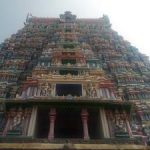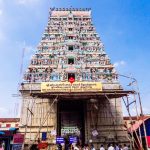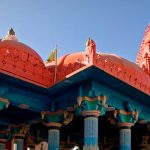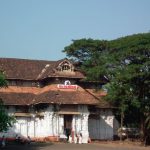The Arunachaleshwara Temple in the Thiruvannamalai hills is a popular destination for both religious and leisure trips. The temple is in a very scenic part of the state with the beautiful and sacred Thiruvannamalai hills towering around the temple. This temple is dear to devotees of Lord Shiva or Arunachaleshwara/Annamalaiyar as well as devotees of Lord Muruga. Lord Shiva is present here as an Agni Lingam (Linga of Fire). It is also the temple that was the coveted destination of the young Ramana Maharshi.
The History Of The Arunachaleshwara Temple
This temple’s history goes back more than 1000 years. The Thevaram which is a 7th-century literary work by the Tamil Nayanar saints mentions this temple. Manikavasagar a Saiva Saint composed the famous Thiruvempavai in this temple.
The Cholas built the original temple structure in the 9th century. The Sangam Dynasty (1336–1485 CE), Saluva and Tuluva Dynasty (1491–1570 CE) expanded the subsequent rulers. The Nayakar Dynasty built the Eastern tower. The Hindu Religious and Charitable Endowments Department, Government of Tamil Nadu maintains the temple.
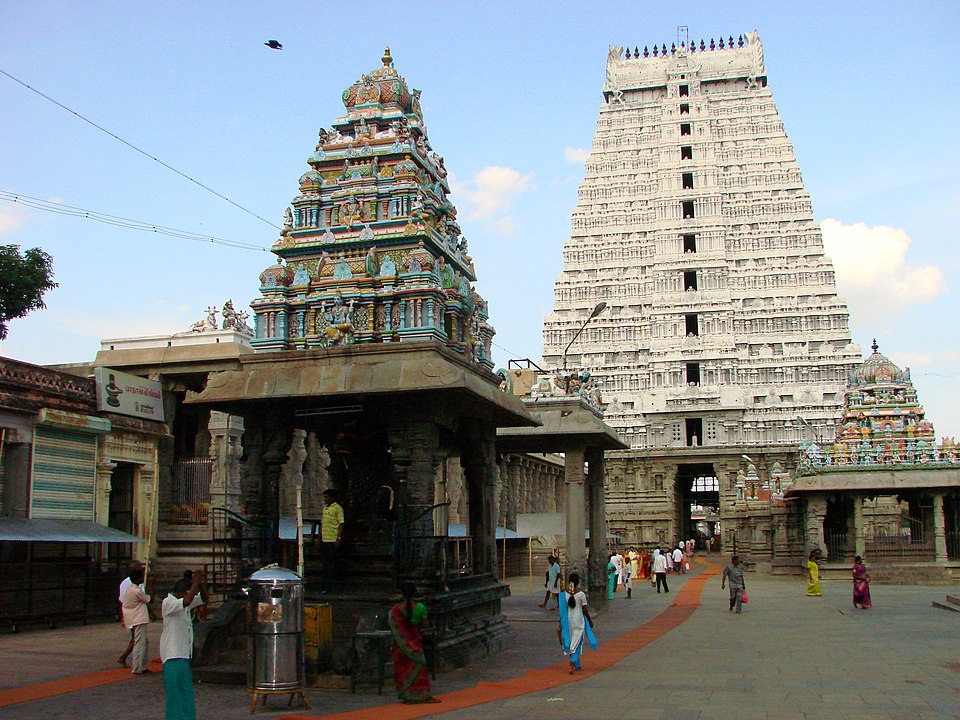
Interesting Facts About The Temple
- The temple complex spans 10 hectares
- There are four Gopurams that serve as the gateway towers. The tallest of them is the Eastern gateway tower.
- There are many halls in the temple. The most famous of the halls is the hall of a thousand pillars. It was constructed during the Vijayanagara rule.
- There are five Prakaras that one has to go through before viewing the deity. Each one has one Nandi.
- Childless couples tie cradles to the temple tree in order to obtain the blessing of having a child.
- The temple is the place where many noted saints composed poetry in praise of the divine. Some of them are Thirugnana Sambandar, Thirunavukkarasar, Sundarar.
- There is a Saint Manikavasagar shrine near the temple
- The poem Thevaram lists 275 Shiva Temples and praises them. These temples are the Thirumurai Sthalangal. Twenty-two of these noteworthy temples are in the state of Tamilnadu and this temple is one of them. It is the primary temple among the rest of the Thirumurai Sthalangal in the state.
- The Siva Puranam mentions this temple as a sacred place for the obtainment of salvation. It states that ‘Ninaithale Mukthi Tharum Thirthalam’. This translates as ‘The mere thought of the temple will give release/salvation’.
- The temples of Lord Shiva have five elements or Pancha Boothas. These elements are land, water, fire, air and the ether. The Shiva Lingam at Arunachaleshwara Temple, Thiruvannamalai is a fire element Lingam.
- There are six Poojas a day and also many festivals throughout the year.
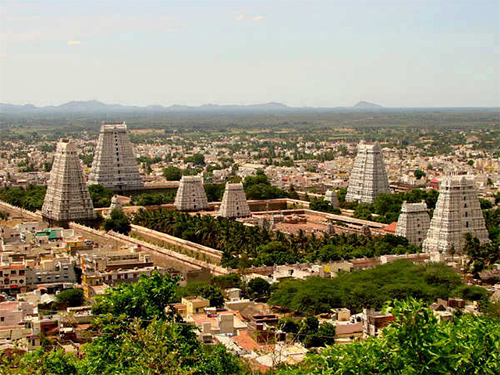
Athara Sthalam
An Athara Sthalam is a temple where even the celestials offer prayers. There are six
Athara Sthalam temples. This temple is the Manipooraga Sthalam among the six. Legend states that Brahma, Vishnu, Sun, Moon and also the eight Vasus have worshipped at this temple.
The Thiruvannamalai hills have been the home of many great beings called the Sidddhars. The great saints who have stayed here are Arunagirinathar, Vitpatchathevar, Guru Namachivayar, Gugai Namachivayar, Arunachala Desikar, Deivasigamani, Mahan Seshadri Swamigal, Sri Yogi Ram Surathkumar and Sri Ramana Maharishi. The life stories of many great spiritual leaders are also interwoven with the temple and the surrounding hills.
The Deities
Lord Shiva is worshipped as Arunachalaeshwara in the Arunachaleshwara Temple, Thiruvannamalai. Parvathi Devi is worshipped as Unnamulai Amman.
The Thiruvanmallai hill itself is divine. The hill has had varying compositions through the ages or Yuga/Yugams. In the Kirthayugam it was Agni/fire, in Tretayugam it was Mannikam/emerald. In Dwarpayugam it was Ponn/gold and it is now composed of rocks in the Kaliyugam. The hill has eight Lingams that face eight different directions. The lingams have different names and significations.
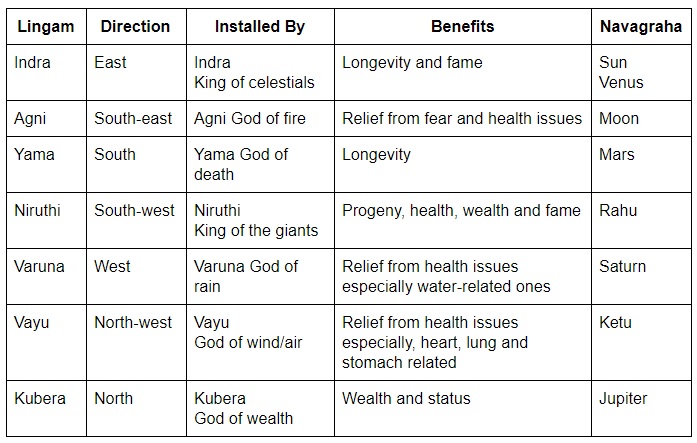
The Legends
As per the legend of the temple, once Parvati Devi, the consort of Lord Shiva closed his eyes playfully. This caused darkness to cover the universe. In Kanchipuram, Maharishi Goutama told her to worship Lord Shiva by going around the Arunachala mountain while chanting Lord Shiva’s name. When she was doing her penance the demon Mahashiasura disturbed her. She killed him on the Pradosham Tithi. Lord Shiva appeared as a column of fire atop the Tiruvanmalai hills. This restored light. Lord Shiva then merged with Parvati Devi making the Ardhanarishvara form. The hill is itself a Shiv Lingam and is sacred.
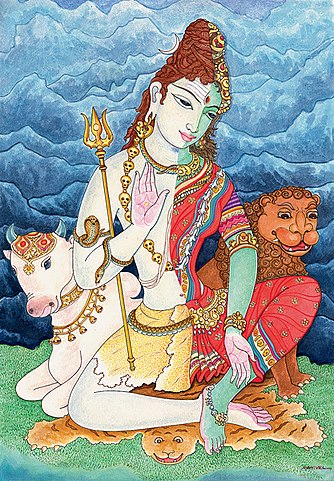
Brahma
Lord Brahma and Lord Vishnu argued about who was the greatest of them both. They went to Lord Shiva to judge and settle the dispute. Lord Shiva set them a challenge. He said that the one who saw his head and his feet would be the greatest. He then became a column of fire (Jothi) that spanned heaven and earth. Lord Brahma flew toward the top of the column in the form of a swan. Lord Vishnu tried to dig deep into the earth in the form of a boar (Varaha). He finally accepted defeat as he was unable to reach the base of the great column of fire.
Lord Brahma was unable to reach the top of the column of fire. But, as he was flying up he saw a flower (called Thazampu) falling downward. This flower had decorated the crown of Lord Shiva. Lord Brahma then asked the flower about the distance to the crown of Lord Shiva. The flower told Brahma that it had been falling for forty thousand years.
Lord Brahma knew that his attempt to reach the crown would be futile. Instead, he convinced the flower to lie on his behalf. The Thazampu flower then gave false witness that it had witnessed Lord Brahma seeing the crown of Lord Shiva’s head. This made Lord Shiva very angry and he cursed them. He then cursed Brahma to have no temple on earth. He also forbade the use of the Thazampu to worship Lord Shiva. The place where Lord Shiva took the form of the Jyothi or column of fire is Thiruvannamalai.
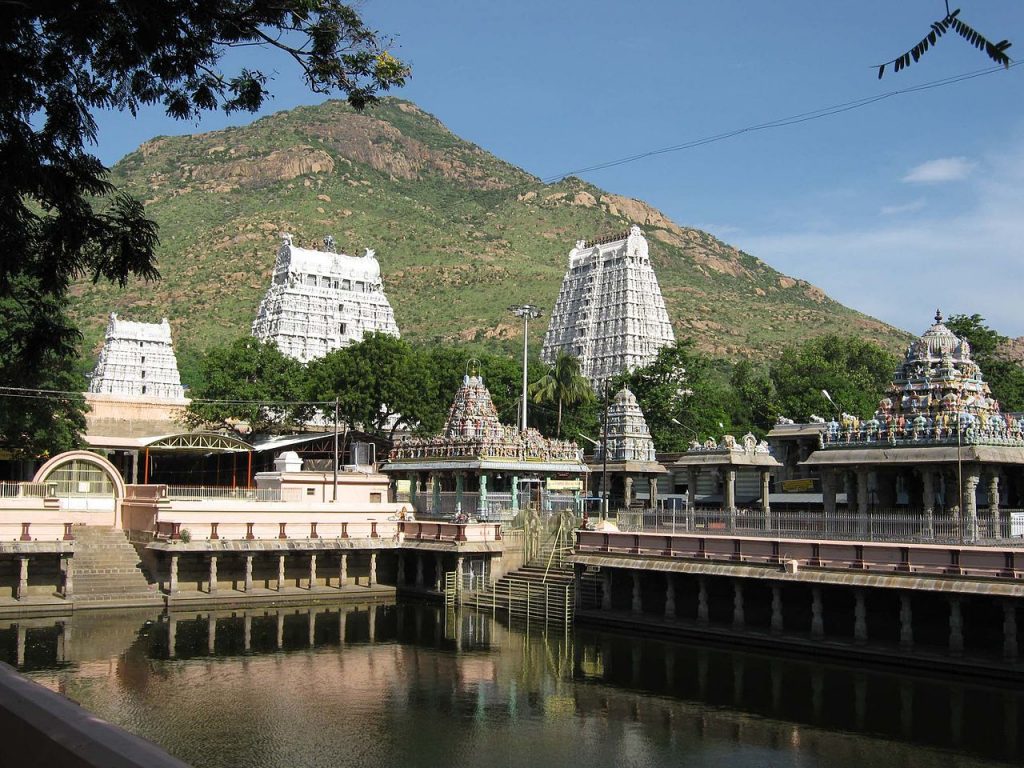
Lord Muruga
The temple is also popular among the devotees of Lord Muruga. There was a saint by the name of Arunagirinathar who was a great devotee of Lord Muruga. When he was young he climbed atop the Valala Maharaja Gopuram and tried to jump off it. Lord Muruga appeared before him and saved him.
There was also a scholar in the king’s court called Sambandan. Sambandan was a devotee of Goddess Kali. He was unhappy with the popularity of the Saint Arunagirinathar. So, he challenged the saint that they would have a competition and bring their favourite deity with them in a visible form. Lord Muruga then appeared as a stone pillar in the temple.
Festival And Rituals
Girivilam
The Arunachala hill is also divine. It is about 2668 feet tall. Every year on the eve of the Karthigai Deepam festival which is on the full moon in the month of November-December a ritual called Girivilam is performed. Giri means mountain. Approximately million devotees circumambulate the temple as well as the hills. The circuit around the hill and temple is 14 kilometres long. Some devotees also perform the ritual of walking around the hill on every full moon. This benefits the person as the hill is divine. Many holy men still live there even in modern times.
Karthigai Deepam Festival
The annual Karthigai Deepam festival is celebrated every year. On this day a huge fire is lit on the top of the hill. It is seen from miles around the hill. This fire symbolises the Agni or Fire Shiv Lingam at the temple. The Ardhaneshawara deity is brought out for this festival. There is also a car festival.
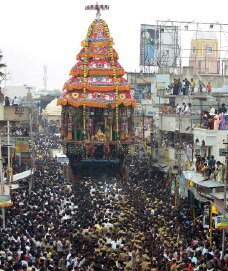
Travel
The Arunachaleshwara Temple, Thiruvannamalai is about 189 kilometres from Chennai. One can reach the temple by road as well as train from Chennai.
Must-See Places In And Around The Temple
The path around the hill and the eight Lingam temples themselves are a must-visit for devotees. The temple is famous for its association with many saints. Sri Ramana Maharishi’s ashram is nearby. The Gingee Fort is a must-see for history enthusiasts.
Accommodation
As the temple is a popular travel as well as a pilgrimage destination, there are plenty of options to stay for varying budgets. There are also many places to eat and shop in the area.







